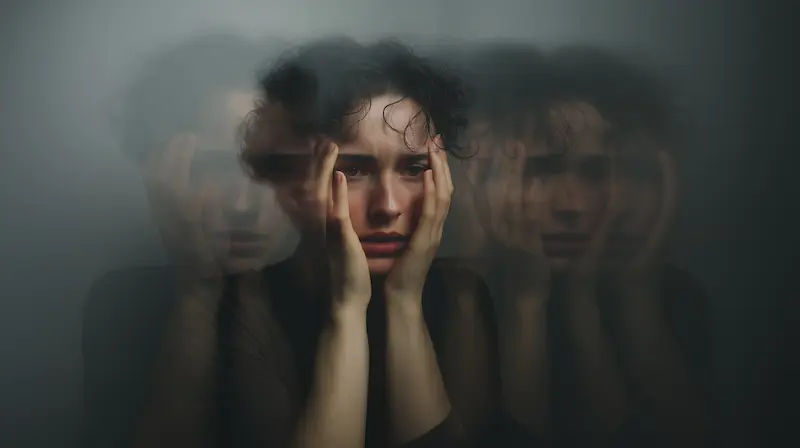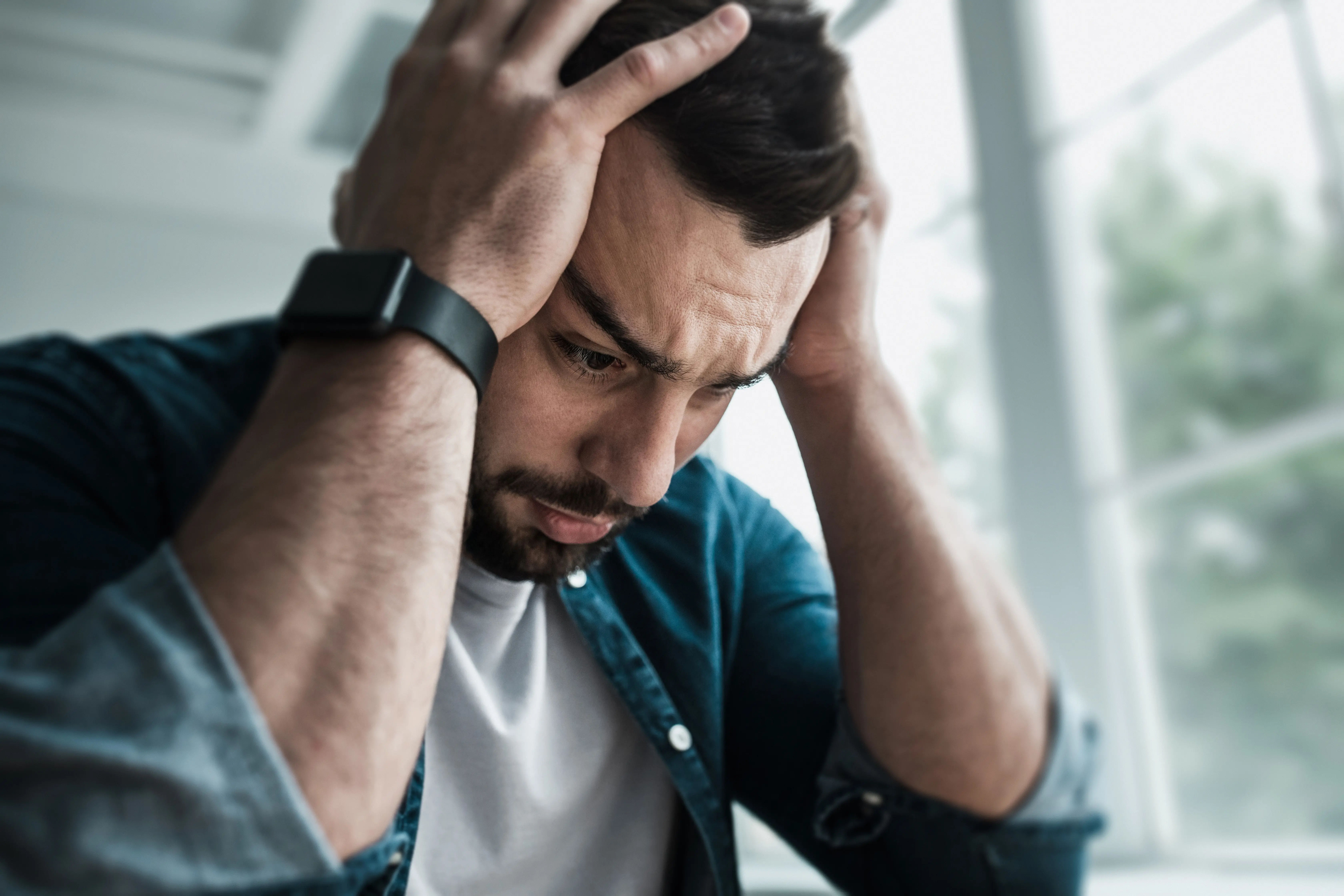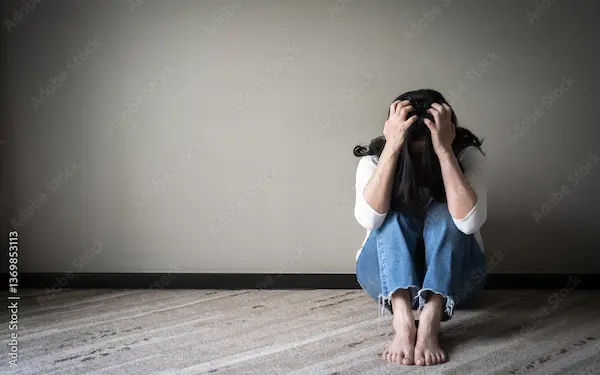Crowd-Induced Claustrophobia: Your Guide to Managing it
Struggling with claustrophobia in crowded spaces? Discover the causes, symptoms, and effective coping strategies from breathing techniques to therapy options to regain calm and confidence in busy environments

Written by Dr. Rohinipriyanka Pondugula
Reviewed by Dr. M L Ezhilarasan MBBS
Last updated on 17th Sep, 2025

Introduction
That familiar knot in your stomach. The quickening of your pulse. The overwhelming sensation that the walls—or in this case, the people—are closing in. If the mere thought of a busy market, a packed concert, or a crowded train platform sends a wave of dread through you, you’re not alone. Claustrophobia in crowds is a common yet deeply challenging experience that blends a fear of confined spaces with the anxiety of being surrounded.
It’s more than just disliking busy places; it’s a visceral reaction that can trigger full-blown panic attacks, making everyday situations feel like insurmountable obstacles. This guide is designed to be your compassionate companion, offering insight into why crowds can feel so threatening. We’ll explore the science behind the panic, identify the symptoms, and—most importantly—equip you with practical, evidence-based strategies both for coping in the moment and for managing your anxiety long-term. Let’s navigate this together and reclaim your comfort in shared spaces.
What is Crowd-Induced Claustrophobia?
Crowd-induced claustrophobia is a specific form of claustrophobia where the trigger is not a small room but a large group of people. The fear is not necessarily of the people themselves, but of the perceived confinement and inability to escape easily. The crowd becomes a living, breathing wall that feels restrictive and suffocating.
This condition exists on a spectrum: for some, it causes mild discomfort, while for others, it can be completely debilitating, leading to the avoidance of social gatherings, public transport, and popular events.
Consult a General Physician for Personalised Advice
Claustrophobia vs. General Crowd Anxiety: Knowing the Difference
It’s important to distinguish between a diagnosed phobia and general unease. Many people feel somewhat stressed in a dense crowd, which might involve irritability, a desire to leave, or feeling overwhelmed by the noise and stimuli.
Claustrophobia, however, is characterised by an intense, irrational fear that may lead to panic attacks. It is often linked to a specific fear of restriction and suffocation. The key difference lies in the severity of the response and the extent to which it disrupts daily life.
The Psychology Behind the Panic: Why Crowds Trigger Us
From a psychological perspective, crowds threaten our fundamental need for personal space and control. When our personal bubble is violated and our ability to move freely is compromised, it can trigger a primal “fight-or-flight” response.
The amygdala—the brain’s fear centre—sounds the alarm, flooding the body with adrenaline. This is not a logical process, but an ancient survival mechanism misfiring in a modern setting, telling you that you are in danger when, in reality, you are simply queuing at a supermarket checkout.
Identifying the symptoms is the first step towards managing them. These signs can appear suddenly and escalate quickly.
Physical Symptoms: Your Body’s Alarm System
Your body reacts to perceived danger as though it were real. Common physical symptoms include:
- Rapid heartbeat or palpitations.
- Shortness of breath or hyperventilation.
- Sweating or chills unrelated to the temperature.
- Trembling or shaking.
- Chest tightness or pain (sometimes mistaken for a heart attack).
- Nausea, dizziness, or light-headedness.
- A sensation of choking or feeling faint.
Psychological and Emotional Symptoms: The Mental Battle
These physical responses are often paired with distressing thoughts and emotions, such as:
An intense fear of losing control or “going mad”.
- An overwhelming urge to escape the situation.
- Derealisation or depersonalisation (feeling detached from your surroundings or yourself).
- Catastrophic thinking, e.g. “I’ll be trapped here forever” or “I’m going to suffocate”.
- A sense of impending doom or fear of dying.
What Causes Claustrophobia in Crowded Spaces?
The roots of this phobia are often a blend of personal history, biology, and psychology.
Past Trauma and Learned Experiences
Negative experiences are a common cause. For example, being trapped in a dense crowd, getting separated from a parent as a child, or having a panic attack in a similar situation.
The brain learns to associate crowds with danger. Phobias can also be learned by observation—if a parent displayed fear of crowded places, a child may internalise that same anxiety.
Evolutionary and Genetic Factors
Researchers suggest that claustrophobia may have evolutionary roots. In early human history, being trapped in a tight space with no exit could have meant mortal danger. This innate caution may be amplified in some individuals today.
Genetics can also play a role, with studies indicating that a predisposition to anxiety disorders can be inherited.
Practical Strategies to Cope in the Moment
When panic begins to rise in a crowd, the following techniques can help you regain a sense of control.
Breathing Techniques to Calm Your Nervous System
The fight-or-flight response causes shallow, chest-based breathing. To counter this, practise diaphragmatic breathing:
- Inhale slowly through your nose for a count of four, letting your belly expand.
- Hold for a moment.
- Exhale slowly through your mouth for a count of six.
- Repeat 5–10 times.
Grounding Exercises: The 5-4-3-2-1 Method
This technique brings your focus back to the present. Identify:
- 5 things you can see.
- 4 things you can feel.
- 3 things you can hear.
- 2 things you can smell.
- 1 thing you can taste.
Strategic Planning: Your Pre-Crowd Game Plan
Planning reduces anxiety:
- Locate exits in advance for reassurance.
- Stay near the edges of the crowd for easier movement.
- Use calming distractions like music or podcasts.
- Agree on a signal with a companion if you need to leave quickly.
Long-Term Management and Treatment Options
For lasting progress, professional support can be invaluable.
Cognitive Behavioural Therapy (CBT): Rewiring Your Thoughts
CBT helps identify negative thought patterns (e.g. “This crowd is dangerous”), challenge them, and replace them with more realistic perspectives (e.g. “This is uncomfortable, but I am safe”).
Gradual Exposure Therapy: Facing Fear Safely
Exposure therapy involves creating a “fear hierarchy”, starting with mild challenges (e.g. watching videos of crowds) and gradually building up to more difficult situations. This structured approach helps desensitise you and rebuild confidence.
When to Consider Medication
Medication is not a cure but may help manage severe symptoms. Doctors may prescribe SSRIs (antidepressants) or short-acting anti-anxiety medication. Medication is most effective when combined with therapy. Consulting a professional, such as through Apollo24|7, ensures proper evaluation and guidance.
Quick Takeaways for Immediate Relief
- Breathe deeply: Practise diaphragmatic breathing to interrupt panic.
- Ground yourself: Use the 5-4-3-2-1 method to reconnect with your surroundings.
- Plan your escape: Know where the exits are for mental reassurance.
- Start small: Build tolerance gradually with less intimidating situations.
- Seek professional help: Therapies like CBT and exposure therapy are highly effective.
- Be kind to yourself: This is a genuine psychological response, not a weakness. Celebrate progress.
Conclusion
Living with claustrophobia in crowds can make the world feel smaller and more intimidating. Yet, as we’ve explored, this fear is manageable. By understanding its causes, recognising the symptoms, and applying practical tools—from breathing exercises to therapeutic interventions—you can begin to dismantle its power.
Progress requires patience, but every small victory counts, whether it’s staying at an event a little longer or calmly navigating a crowded shop. The aim is not to embrace every packed space but to move through the world with more confidence and calm. If you find progress difficult alone, seeking support from a mental health professional is a strong, proactive step towards lasting peace.
Consult a General Physician for Personalised Advice
Consult a General Physician for Personalised Advice

Dr. Srujana Mulakalapalli
General Physician/ Internal Medicine Specialist
5 Years • MBBS, MD (GENERAL MEDICINE)
Bengaluru
Apollo Medical Center, Marathahalli, Bengaluru
(25+ Patients)

Dr. Anand Ravi
General Physician
2 Years • MBBS
Bengaluru
PRESTIGE SHANTHINIKETAN - SOCIETY CLINIC, Bengaluru

Dr Syed Mateen Pasha
General Physician
2 Years • MBBS
Bengaluru
PRESTIGE SHANTHINIKETAN - SOCIETY CLINIC, Bengaluru

Dr. Syed Ismail Ali
General Practitioner
7 Years • MBBS
Hyderabad
Apollo 24|7 Clinic, Hyderabad

Dr. Harshendra Jaiswal
General Physician/ Internal Medicine Specialist
12 Years • MBBS , MD (General medicine)
Kolkata
108 DHANA DHANVANTARI Clinic, Kolkata
(25+ Patients)
Consult a General Physician for Personalised Advice

Dr. Srujana Mulakalapalli
General Physician/ Internal Medicine Specialist
5 Years • MBBS, MD (GENERAL MEDICINE)
Bengaluru
Apollo Medical Center, Marathahalli, Bengaluru
(25+ Patients)

Dr. Anand Ravi
General Physician
2 Years • MBBS
Bengaluru
PRESTIGE SHANTHINIKETAN - SOCIETY CLINIC, Bengaluru

Dr Syed Mateen Pasha
General Physician
2 Years • MBBS
Bengaluru
PRESTIGE SHANTHINIKETAN - SOCIETY CLINIC, Bengaluru

Dr. Syed Ismail Ali
General Practitioner
7 Years • MBBS
Hyderabad
Apollo 24|7 Clinic, Hyderabad

Dr. Harshendra Jaiswal
General Physician/ Internal Medicine Specialist
12 Years • MBBS , MD (General medicine)
Kolkata
108 DHANA DHANVANTARI Clinic, Kolkata
(25+ Patients)
More articles from Anxiety disorders
Frequently Asked Questions
Is claustrophobia in crowds a form of agoraphobia?
They are distinct but can overlap. Claustrophobia focuses on fear of confinement, while agoraphobia centres on being in situations where escape feels difficult or help seems unavailable.
Can claustrophobia develop later in life?
Yes. While often developing in childhood, it can also emerge in adulthood following a traumatic or stressful event, such as being stuck in a lift or caught in a dense crowd.
What’s the fastest way to stop a panic attack in a crowd?
Focus on your exhale. Breathing out longer than you inhale activates the body’s calming system. Pair this with a grounding exercise, such as naming objects around you.
Are there any apps that can help with crowd anxiety?
Yes. Apps such as Calm, Headspace, and Sanvello offer guided breathing, meditation, and grounding tools for on-the-go support.
How can I help a friend who is experiencing claustrophobia in a crowd?
Stay calm, avoid dismissing their fear, and ask what they need. Support them in moving to a quieter space, speak in a reassuring tone, and remind them to breathe with you. Avoid saying “just calm down”—instead, focus on helping them feel safe.




